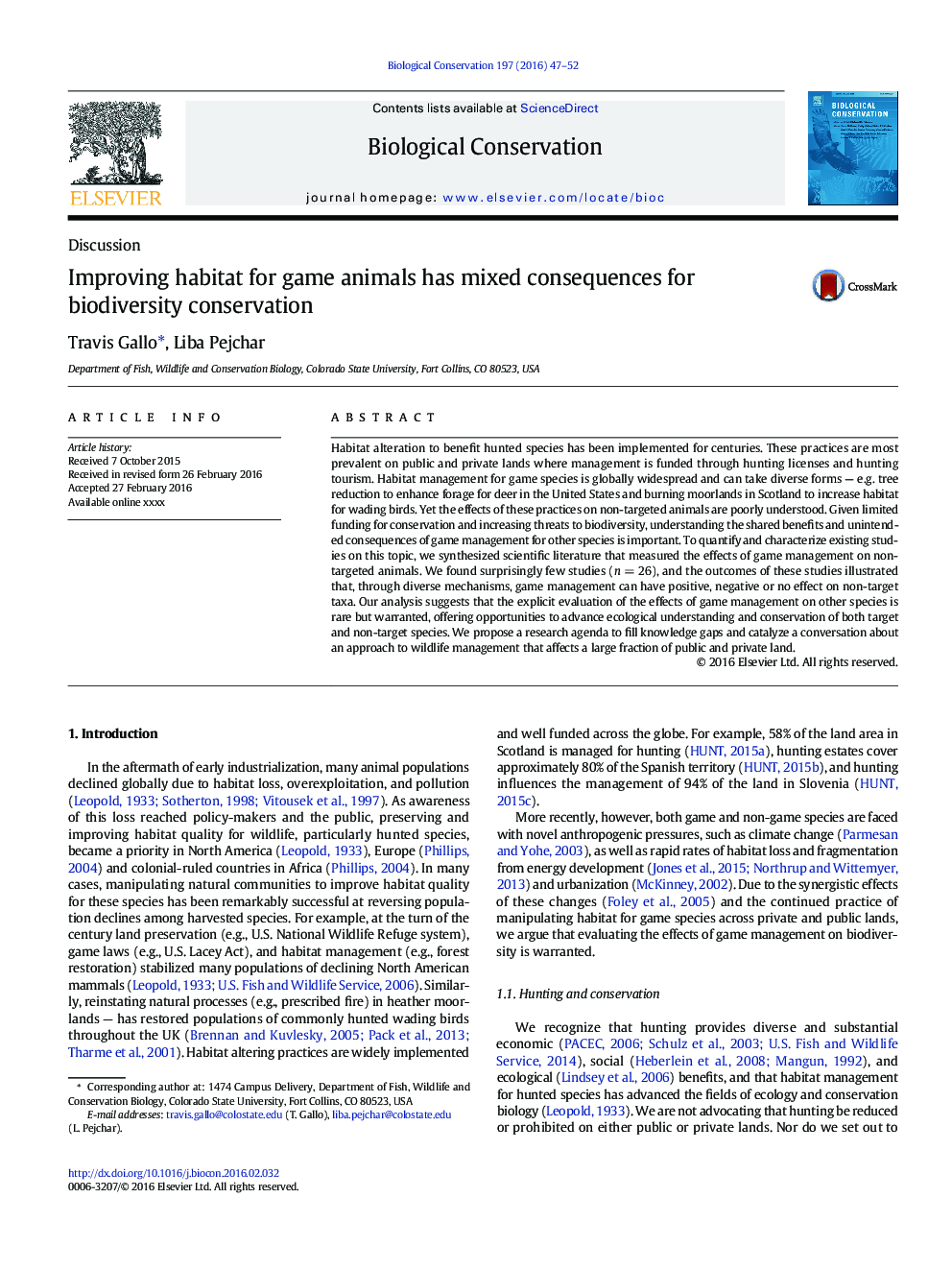| Article ID | Journal | Published Year | Pages | File Type |
|---|---|---|---|---|
| 6298446 | Biological Conservation | 2016 | 6 Pages |
Abstract
Habitat alteration to benefit hunted species has been implemented for centuries. These practices are most prevalent on public and private lands where management is funded through hunting licenses and hunting tourism. Habitat management for game species is globally widespread and can take diverse forms - e.g. tree reduction to enhance forage for deer in the United States and burning moorlands in Scotland to increase habitat for wading birds. Yet the effects of these practices on non-targeted animals are poorly understood. Given limited funding for conservation and increasing threats to biodiversity, understanding the shared benefits and unintended consequences of game management for other species is important. To quantify and characterize existing studies on this topic, we synthesized scientific literature that measured the effects of game management on non-targeted animals. We found surprisingly few studies (n = 26), and the outcomes of these studies illustrated that, through diverse mechanisms, game management can have positive, negative or no effect on non-target taxa. Our analysis suggests that the explicit evaluation of the effects of game management on other species is rare but warranted, offering opportunities to advance ecological understanding and conservation of both target and non-target species. We propose a research agenda to fill knowledge gaps and catalyze a conversation about an approach to wildlife management that affects a large fraction of public and private land.
Related Topics
Life Sciences
Agricultural and Biological Sciences
Ecology, Evolution, Behavior and Systematics
Authors
Travis Gallo, Liba Pejchar,
